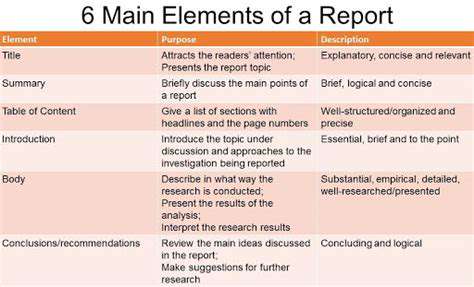Guide to Delegating Tasks Without Micromanaging

Understanding the Impact of Micromanagement
Micromanagement, a style of management characterized by excessive control and oversight, can have a profoundly negative impact on employee morale and productivity. Employees often feel undervalued and disempowered, leading to decreased motivation and a sense of resentment. This can manifest in a variety of ways, from decreased output to higher employee turnover rates. Understanding the detrimental effects of micromanagement is crucial for fostering a healthy and productive work environment.
Beyond the immediate impact on individuals, micromanagement can also create a toxic work culture. It fosters an atmosphere of distrust and inhibits the development of trust-based relationships between managers and team members. This atmosphere can be particularly challenging to overcome and can lead to long-term damage to the organization.
Recognizing the Signs of Micromanagement
Identifying micromanagement can be challenging because it often appears subtle. One key indicator is the excessive focus on minor details and the lack of delegation. Managers who consistently scrutinize every aspect of a project, from the smallest tasks to the largest decisions, are likely micromanaging.
Another telltale sign is the constant need for updates and approval. If managers demand frequent reports and approvals for seemingly insignificant tasks, it signals a tendency toward micromanagement. This can stifle creativity and independent thought, creating a stifling environment.
The Role of Communication in Avoiding Micromanagement
Effective communication is paramount in preventing micromanagement. Managers should clearly define roles, responsibilities, and expectations. Open and honest communication channels allow employees to ask questions, voice concerns, and contribute their ideas without fear of reprisal. Clear communication fosters trust and empowers employees to take ownership of their work.
Establishing clear goals and expectations at the beginning of a project is also critical. Regular check-ins to assess progress and address any challenges are also essential. Regular feedback, both positive and constructive, is crucial to ensuring that employees feel supported and empowered to do their best.
Delegation as a Countermeasure to Micromanagement
Delegation is a cornerstone of effective leadership and a powerful countermeasure to micromanagement. By delegating tasks effectively, managers empower employees to take ownership and develop their skills. This fosters autonomy and trust within the team. Delegation not only improves efficiency but also promotes professional growth for employees.
Trust and Empowerment: Building a Positive Work Environment
Building trust and empowering employees are fundamental to creating a positive work environment where micromanagement is unnecessary. Managers should focus on creating a culture of trust, where employees feel comfortable taking initiative and making decisions. This fosters a sense of ownership and responsibility, leading to increased motivation and productivity.
Establishing Clear Expectations and Boundaries
Setting clear expectations and boundaries is crucial in preventing micromanagement. These expectations should outline the desired outcomes, deadlines, and performance standards. This clarity allows employees to understand what is expected of them and how their work will be evaluated. Establishing these clear guidelines will minimize the need for constant oversight and allow employees to work independently. Managers should also be mindful of providing regular constructive feedback, guiding employees towards improvement rather than simply pointing out mistakes.
Measuring and Evaluating Results

Defining Key Performance Indicators (KPIs)
A crucial first step in measuring and evaluating results is to clearly define the Key Performance Indicators (KPIs) that will be tracked. These KPIs need to be directly tied to the overall goals and objectives of the project or initiative. Effective KPIs are specific, measurable, achievable, relevant, and time-bound (SMART). This ensures that the metrics being collected accurately reflect the progress toward the desired outcomes.
Choosing the right KPIs is critical. If the KPIs are not aligned with the objectives, the evaluation process will be flawed and may lead to incorrect conclusions about the success of the initiative.
Data Collection Methods
Once the KPIs are defined, appropriate data collection methods must be established. This could involve surveys, interviews, focus groups, or the analysis of existing data sources. Careful consideration must be given to the reliability and validity of the data collection methods employed. Methods should be chosen that are practical, cost-effective, and ethical to ensure the integrity of the results.
Data Analysis Techniques
The collected data must then be analyzed using appropriate statistical methods and techniques. This analysis process involves identifying trends, patterns, and correlations within the data to determine the effectiveness of the strategies being implemented. Choosing the right analytical methods is vital for extracting meaningful insights from the data and drawing accurate conclusions.
Simple descriptive statistics can be useful for summarizing data, but more complex techniques, such as regression analysis, may be necessary to understand cause-and-effect relationships.
Establishing Baselines and Benchmarks
Before evaluating results, it's essential to establish baselines and benchmarks. A baseline represents the current performance level against which future improvements can be measured. Benchmarks provide a comparison to industry standards or best practices, offering a broader perspective on performance.
Interpreting Results and Drawing Conclusions
Analyzing the data and comparing it to established baselines and benchmarks will yield insights into the success of the project. Interpreting these findings accurately is crucial for making informed decisions about future strategies and resource allocation. Thorough analysis should consider various factors that might influence the results, such as external market conditions or unforeseen circumstances.
Reporting and Communication
Communicating the results effectively is essential for gaining buy-in and driving future improvements. Reports should be clear, concise, and easily understandable by all stakeholders. Visualizations, such as charts and graphs, can enhance the clarity and impact of the results presentation.
Effective communication of findings is paramount to driving action and ensuring that learnings are implemented to achieve greater success in future endeavors.
Continuous Monitoring and Evaluation
Measuring and evaluating results is not a one-time event; it's an ongoing process. Continuous monitoring and evaluation are critical for identifying areas for improvement, adapting strategies as needed, and ensuring long-term success. By regularly assessing progress and making adjustments, organizations can maximize the return on investment of their efforts and achieve their strategic goals.
Read more about Guide to Delegating Tasks Without Micromanaging
Hot Recommendations
- How to Stay Productive While Working Remotely
- Tips for Managing Conflict with Coworkers
- Entrance & Certification Exams (升学考试)
- How to Improve Your Storytelling Skills (Speaking)
- How to Find Profitable Side Hustles
- Tips for Preparing for the TOEFL iBT Home Edition
- Guide to Switching Careers from [Industry A] to [Industry B]
- How to Run an Effective Hybrid Meeting
- Tips for Marketing Your Side Hustle on Instagram




![Best Resume Templates for Career Change [2025]](/static/images/32/2025-05/EmphasizingKeywordsandIndustry-SpecificLanguage.jpg)






